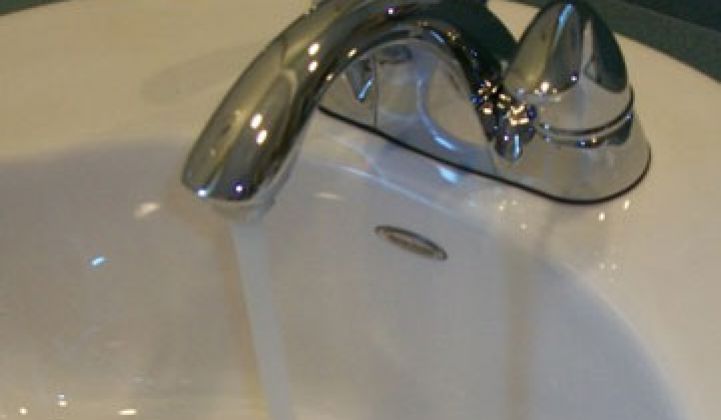For decades, water conservation in the home has centered on parents telling their children to turn off the water while they brush their teeth or to take quicker showers.
Like electricity use, there’s a lack of knowledge and transparency about what actually saves significant amounts of water, but software is here to help.
WaterSmart Software, a software-as-a-service with a focus on utility-customer engagement, which raised $1 million in a second round of funding in June, just released the first results of a pilot with the City of Cotati, Calif.
The pilot, which had nearly 1,000 households and a similar control group found that those using WaterSmart reduced their water demand by 5 percent in the first six months and maintained that savings throughout the year.
The offerings and results are similar to Opower in the electric sector, which uses behavioral science, neighbor comparisons, and customized efficiency tips to drive conservation.
Water infrastructure across the country is desperately in need of upgrade. The price of water is rising proportionately faster than electricity in the U.S., according to Circle of Blue. Even though money is tight, water investment increasingly cannot be ignored. The EPA reports that the U.S. loses about 6 billion gallons of water from leaks every year.
“This pilot program proves WaterSmart’s customer-engagement platform is one of the easiest and most efficient ways for utilities to reduce water demand,” Peter Yolles, CEO of WaterSmart Software said in a statement. “By engaging rate payers directly with proven behavioral science methodologies, WaterSmart drives down demand without costly retrofits and capital improvements.”
Many water utilities are municipal-owned, which are often even more cash-strapped than their investor-owned counterparts. In 2000, about 85 percent of the U.S. population was served by public water supplies, according to the U.S. Geological Survey.
As important as the savings is the fact that the group using WaterSmart in the pilot engaged with water conservation programs ten times as much as those who did not use the software.
“WaterSmart’s solution enables us to have sustained, personalized communications with our customers. The Home Water Reports generated a measurable increase in interest in the City’s water conservation programs,” said Damien O’Bid, director of Public Works/Engineering for the city of Cotati. “We now have consumption, real estate and program participation information in one place, so we can make intelligent, cost-effective choices.”
WaterSmart has four other pilots with different utilities and is closing in on a contract with a California water utility. Like Opower, WaterSmart’s software won’t solve all of the water loss problems that utilities have, but given the success of Opower, it offers utilities a low-cost place to start.
There are increased software offerings for utilities to manage their aging infrastructure without having to make wholesale upgrades. The market for smart water meters is growing and so is water data management, with both meter companies and MDM looking to win municipal contracts by offering solutions for both water and gas and/or electricity.
Meter companies and others, like Echologics, offer acoustics technology that can monitor mains and pipes for leaks and help detect the infrastructure most in need up upgrades. Multinational players like IBM (NYSE: IBM) and Oracle (Nasdaq: ORCL) are also increasingly focusing on the water sector with software offerings. With about $14 billion water wasted globally every year according to the World Bank, there’s space for everyone to jump in.



